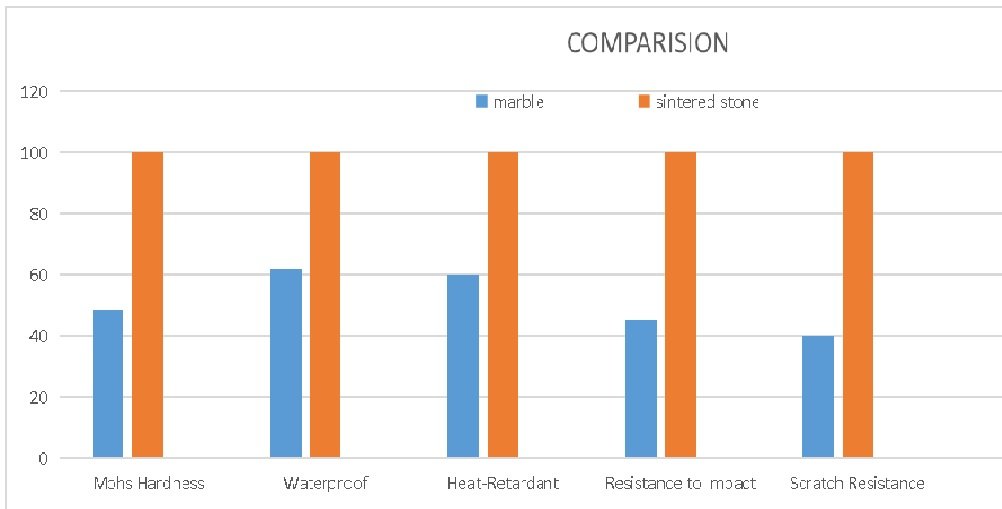Sintered stone, when compared with natural marble, reveals that these two materials are very different. Along the way, we will look at the characteristics of each and explore how these materials are different.
Different origin and appearance
The sintered stone is industrially processed, while marble comes from nature.
Therefore, the Sintered stone is rich in patterns and colors and could be customized. The texture of each marble piece is unique.
Different composition
The sintered stone is made of natural raw materials (silica, inorganic clay, feldspar powder) through a special process, pressed with a press, and fired at a high temperature above 1200°C. Marble is mainly composed of calcite, limestone, serpentine, and dolomite, and its main components are calcium carbonate (over 50% of the total), magnesium carbonate, calcium oxide, manganese oxide, and silicon dioxide.
Different physical and chemical properties
A. Hardness
The sintered stone has a Mohs hardness of 6-7, which is abrasion-resistant, scratch-resistant, and impact-resistant. It can cut vegetables on the rock slab without damage.
The Mohs hardness of marble is 2.5-5. It has a dense texture but low hardness.
B. Density
The sintered stone has higher compactness, strong waterproof, and anti-fouling ability.
The compactness of marble varies greatly according to different varieties, and generally, it is relatively loose.
C. Stability
The sintered stone has high stability, is durable, does not change color, and does not deform. The sintered stone is abrasion-resistant, scratch-resistant, impact-resistant, high-temperature resistant, and excellent in waterproof stability.
Marble is physically stable as well, and let’s take a look at the below chart to find out more differences between sintered stone and marble in physical and chemical properties.
Applications

One process that might be made between marble and sintered stone is that the stain resistance of sintered stone is higher while the marble is low. As mentioned earlier, marble is consisting of calcite. This mineral is dissolved easily by acidic substances. Even normal household liquids like juice and vinegar will dissolve calcite. Another difference between sintered stone and marble is that marble is far softer and is easily scratched. For this reason, some designers like better to use a harder material especially if the surface is to be used in the Dining room.
Sintered stone is also applied on stairs, countertops, cabinets, wardrobes, furniture, and other fields.
Because of the high density and stability of sintered stone, more designers and architects become aware of choosing surface materials for a given project. That’s one of the reasons why sintered stone is becoming desirable.

